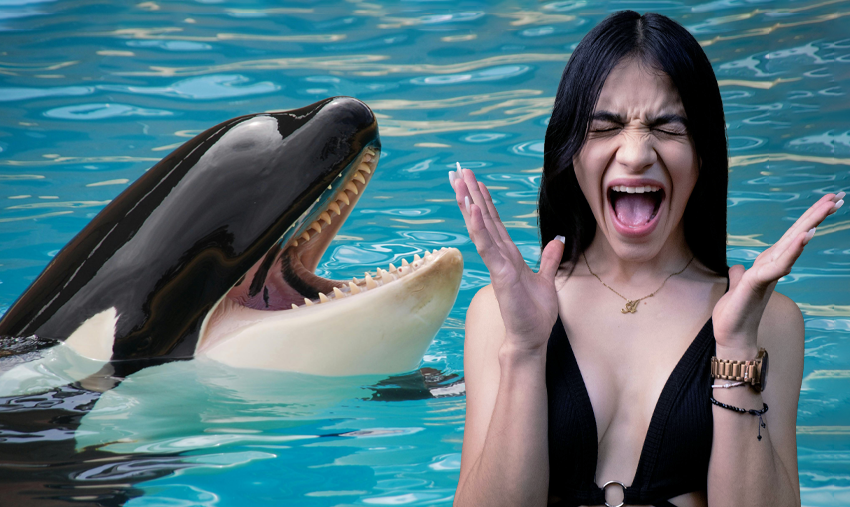Flee Willy
Orcas burnish their resume as nature’s perfect killers

Great white sharks have long been considered the most dangerous marine predator (if only by Spielberg devotees) but it seems that the real reigning killers-of-the-sea are actually killer whales (also known as orcas).
Always known to be deadly in packs, orcas are now upping their game. You may have seen the news a couple weeks ago, about the lone South African orca that killed an 8-foot juvenile great white shark and showed off its liver to the occupants of nearby boats. We’ll get to that, but first, let’s look at what we already knew about killer whales.
Big brains and social skills
Killer whales weigh up to 11 tons, they can swim at speeds of up to 30 miles per hour, and they have large brains. When considering its encephalization quotient–the ratio of brain size to overall mass–killer whales score 2.5. That’s well behind humans (7), but ahead of bottlenose dolphins (4), and other whales (<1).
Their brains are also full of extra folds and myelinated neurons, like ours, contributing to even more advanced processing power.
They use all that brainpower to coordinate their attacks, gathering in packs to hunt using various terrifying techniques that vary according to habitat and food availability:
- Ice-floe overflow: Moving in lockstep to charge the ice, knocking the seal into the water
- Karate chop: Lifting their tails and whacking a shark on the back to stun it
- Carousel: A dizzying circular pod-feeding technique that works to coral large schools of smaller fish
- Bite, ram and slam: A wolflike technique wherein they taunt and terrorize large prey such as other whales. (They have also been seen launching onto whales’ blowholes, to hold them underwater and drown them.)
- Storm the beach: Emerging from the water to catch prey that believes it’s safe on land. They’re the only whales known to beach themselves on purpose.
A Worrying New Trend
So in the past, that orca in South Africa, whom scientists have named Starboard, generally worked with his partner Port. (Yes, that’s a cute pair of names, but also a useful one: Starboard’s dorsal fin bends to the right, Port’s to the left.) In 2022, the duo was responsible for at least eight great-white deaths in the Gansbaai region near the continent’s southwest tip. The shark carcasses washed up on shore, and in seven out of eight of them, only the liver had been eaten (they have an M.O.!).
Later in 2022, Starboard officially became a bad influence, showing up (sans Port) to hunt with a new crew—four “new” killer whales who weren’t known to previously prey on sharks. Not surprisingly, scientists began to worry about the new predation behavior spreading within the local killer whale community.
But in 2023, Starboard and Port were together again. In a single week, they killed 17 sevengill sharks, whose liverless bodies washed up on shore. “These [killer whales] have clearly become able to handle what would otherwise be an absolutely terrifying creature and handle them very efficiently,” a marine biologist gasped to BBC at the time.
It wasn’t until this year that Starboard freaked everyone out with his newest trick. “The sighting [and video] revealed evidence of solitary hunting by at least one killer whale,” another scientist told New Atlas, “challenging conventional cooperative hunting behaviors known in the region.”
With the ocean’s delicate ecosystem hanging in the balance–not to mention the appetites of South African boat owners–who’s going to tell these defiant apex predators that they have to behave?
Not it!
